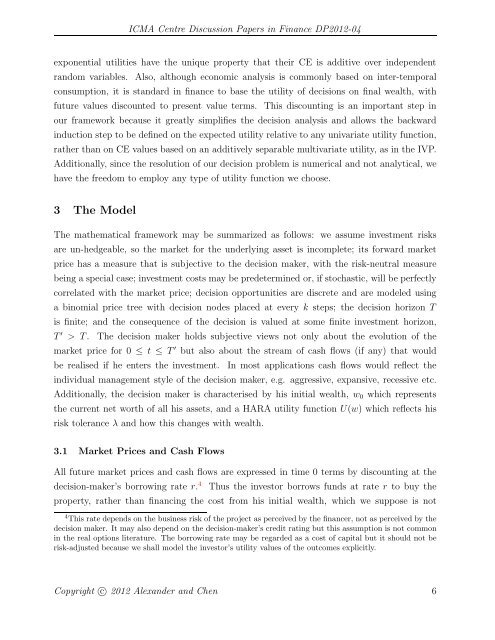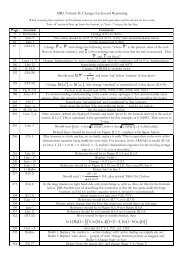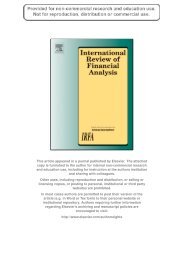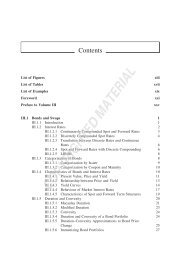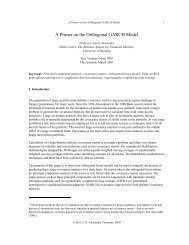A General Approach to Real Option Valuation with ... - ICMA Centre
A General Approach to Real Option Valuation with ... - ICMA Centre
A General Approach to Real Option Valuation with ... - ICMA Centre
Create successful ePaper yourself
Turn your PDF publications into a flip-book with our unique Google optimized e-Paper software.
<strong>ICMA</strong> <strong>Centre</strong> Discussion Papers in Finance DP2012-04exponential utilities have the unique property that their CE is additive over independentrandom variables. Also, although economic analysis is commonly based on inter-temporalconsumption, it is standard in finance <strong>to</strong> base the utility of decisions on final wealth, <strong>with</strong>future values discounted <strong>to</strong> present value terms. This discounting is an important step inour framework because it greatly simplifies the decision analysis and allows the backwardinduction step <strong>to</strong> be defined on the expected utility relative <strong>to</strong> any univariate utility function,rather than on CE values based on an additively separable multivariate utility, as in the IVP.Additionally, since the resolution of our decision problem is numerical and not analytical, wehave the freedom <strong>to</strong> employ any type of utility function we choose.3 The ModelThe mathematical framework may be summarized as follows: we assume investment risksare un-hedgeable, so the market for the underlying asset is incomplete; its forward marketprice has a measure that is subjective <strong>to</strong> the decision maker, <strong>with</strong> the risk-neutral measurebeing a special case; investment costs may be predetermined or, if s<strong>to</strong>chastic, will be perfectlycorrelated <strong>with</strong> the market price; decision opportunities are discrete and are modeled usinga binomial price tree <strong>with</strong> decision nodes placed at every k steps; the decision horizon Tis finite; and the consequence of the decision is valued at some finite investment horizon,T ′ > T. The decision maker holds subjective views not only about the evolution of themarket price for 0 ≤ t ≤ T ′ but also about the stream of cash flows (if any) that wouldbe realised if he enters the investment. In most applications cash flows would reflect theindividual management style of the decision maker, e.g. aggressive, expansive, recessive etc.Additionally, the decision maker is characterised by his initial wealth, w 0 which representsthe current net worth of all his assets, and a HARA utility function U(w) which reflects hisrisk <strong>to</strong>lerance λ and how this changes <strong>with</strong> wealth.3.1 Market Prices and Cash FlowsAll future market prices and cash flows are expressed in time 0 terms by discounting at thedecision-maker’s borrowing rate r. 4 Thus the inves<strong>to</strong>r borrows funds at rate r <strong>to</strong> buy theproperty, rather than financing the cost from his initial wealth, which we suppose is not4 This rate depends on the business risk of the project as perceived by the financer, not as perceived by thedecision maker. It may also depend on the decision-maker’s credit rating but this assumption is not commonin the real options literature. The borrowing rate may be regarded as a cost of capital but it should not berisk-adjusted because we shall model the inves<strong>to</strong>r’s utility values of the outcomes explicitly.Copyright c○ 2012 Alexander and Chen 6


